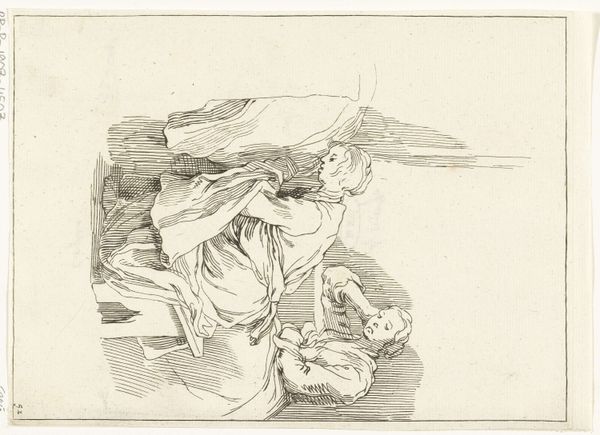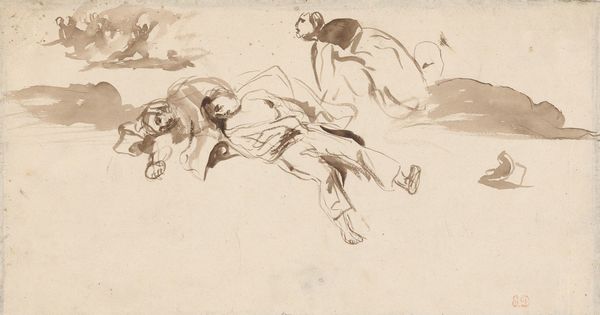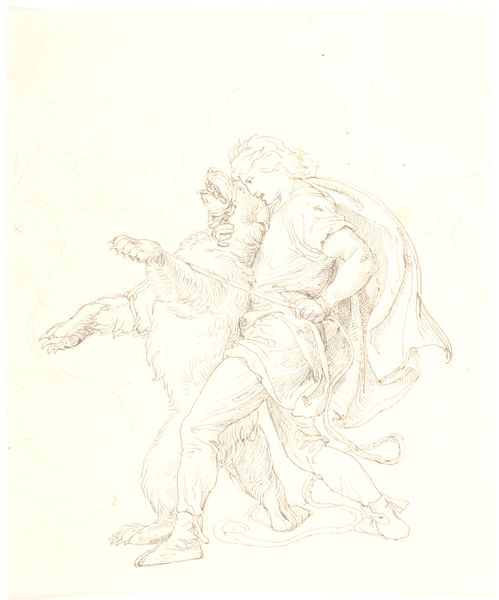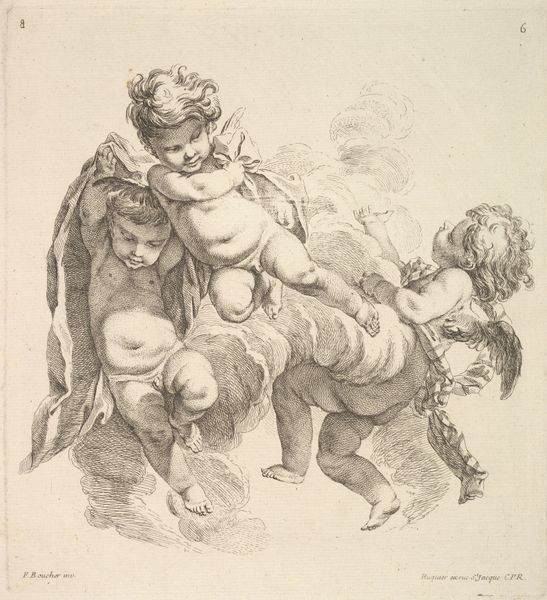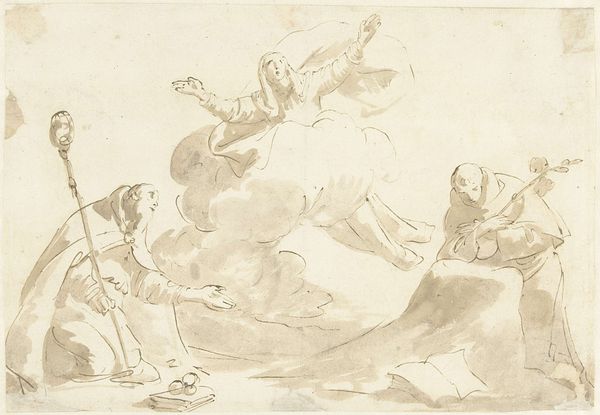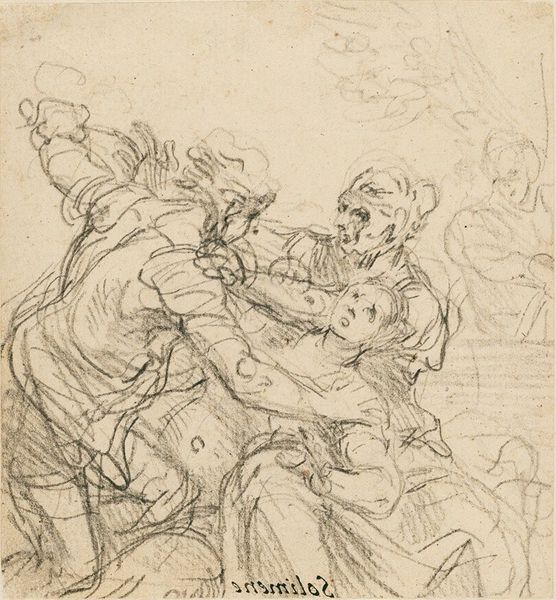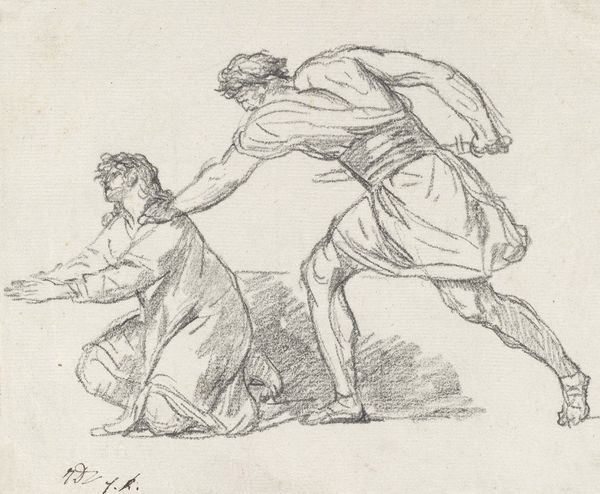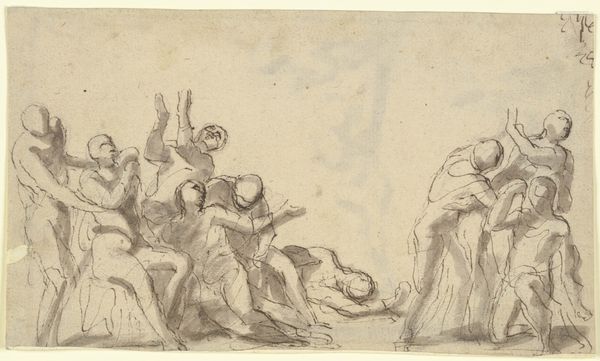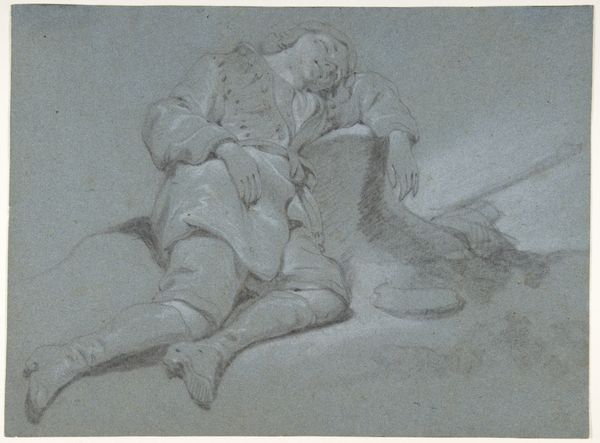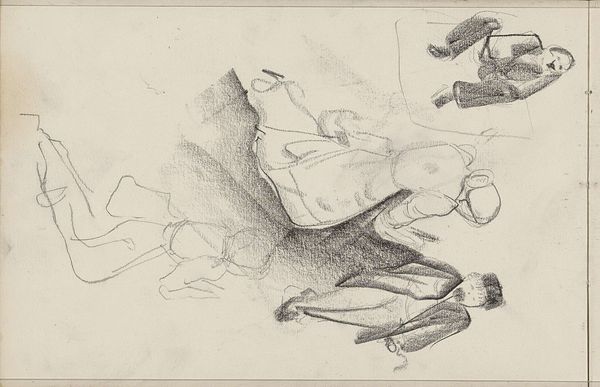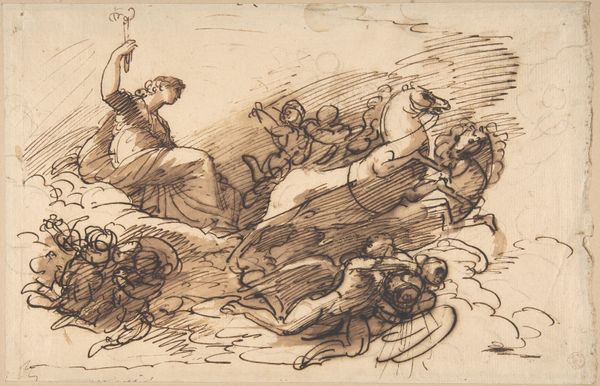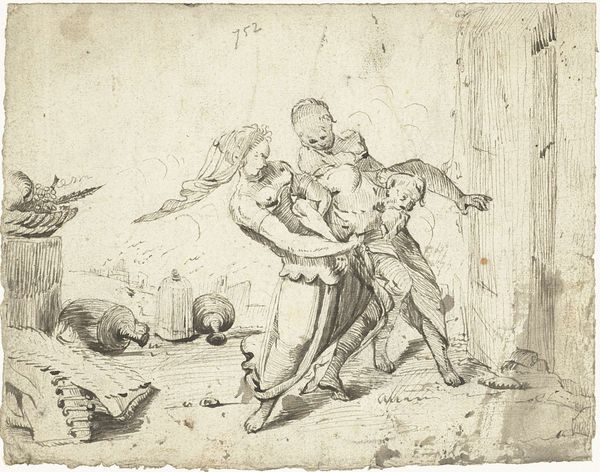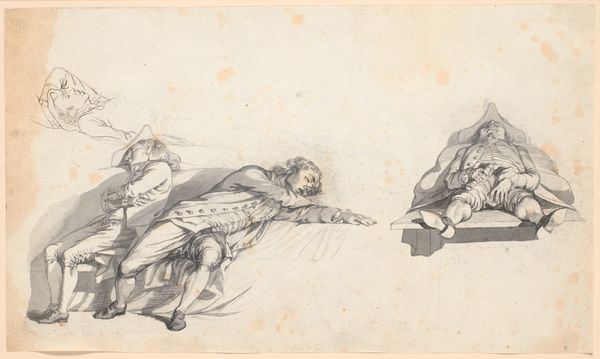
drawing, ink, pen
#
drawing
#
quirky sketch
#
narrative-art
#
baroque
#
pen sketch
#
figuration
#
personal sketchbook
#
ink
#
sketchwork
#
pen-ink sketch
#
sketchbook drawing
#
pen
#
storyboard and sketchbook work
#
sketchbook art
#
fantasy sketch
#
initial sketch
Dimensions: height 109 mm, width 121 mm
Copyright: Rijks Museum: Open Domain
Curator: Telemachus slaying the lion. This pen and ink drawing by Bernard Picart, created between 1683 and 1733, is currently housed in the Rijksmuseum. It's quite striking, wouldn't you agree? Editor: Indeed. My immediate response is drawn to the visible struggle within the rough marks; the materiality of the sketch itself embodies that tension. It appears quickly rendered, almost as if captured on the spot, lending a sense of immediacy. Curator: That energy really comes across. Considering the mythological narrative, this is more than a simple fight. Telemachus, son of Odysseus, becomes a symbol of inherited strength, echoing his father’s legacy as he conquers the beast. What does the sketch reveal to you about labor, and class in this narrative? Editor: The swift pen strokes indicate perhaps preliminary workings—perhaps it was more about process rather than product, you know. In other words, the art of practice itself, and in its raw nature, it removes any pretense that high art holds versus the everyday workings of a draftsman’s labor. It hints at production without high-end polish. Curator: Absolutely. Picart was engaging with narratives common in his time. But consider the symbolism – the lion, often associated with royalty and power, is challenged and ultimately defeated by a younger hero. It brings forward ideas of changing social orders. Who wields the actual tool? How can marginalized communities rewrite and redefine these narratives? Editor: That brings forward issues of class! By demystifying the artist's hand and displaying it in a state of rough material, he exposes production practices. Moreover, the artist can be considered as a craftsperson here. It all contributes to a deconstruction of that idea that "fine art" somehow remains distant or sacred... I think that there are other dimensions here at play. Curator: I agree. The very act of drawing and the marks left behind represent more than a technical skill; it's a conscious claiming of representation. Looking at Telemachus then reveals how the historical context can highlight critical conversations surrounding empowerment, identity, and perhaps collective emancipation. Editor: Fascinating. Well, the unpretentious materiality has certainly shifted my perceptions here. The focus on materials—pen, ink, and paper—pushes forward considerations beyond mythic heroism. Curator: I'm walking away reconsidering both how and whose stories are told, and how art can advocate for these conversations.
Comments
No comments
Be the first to comment and join the conversation on the ultimate creative platform.
